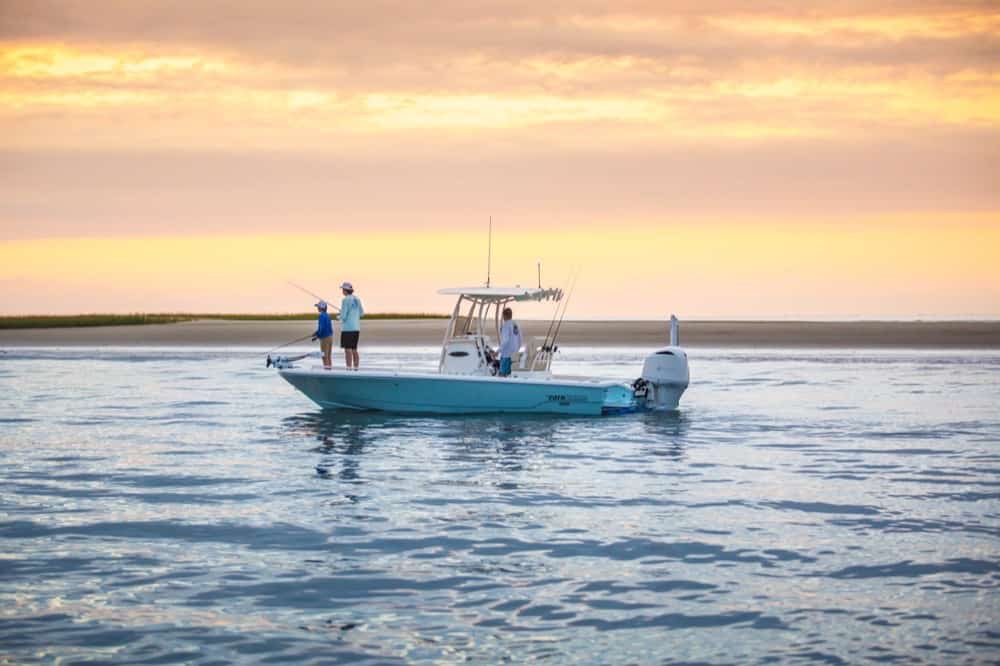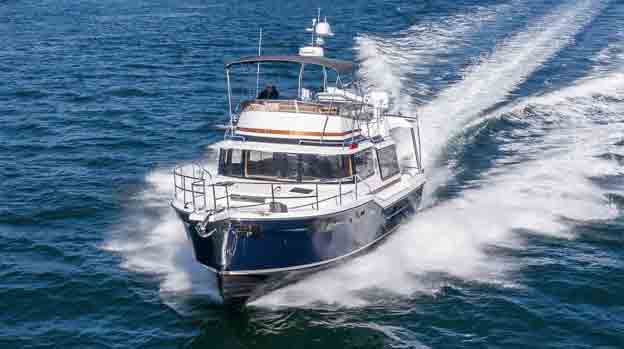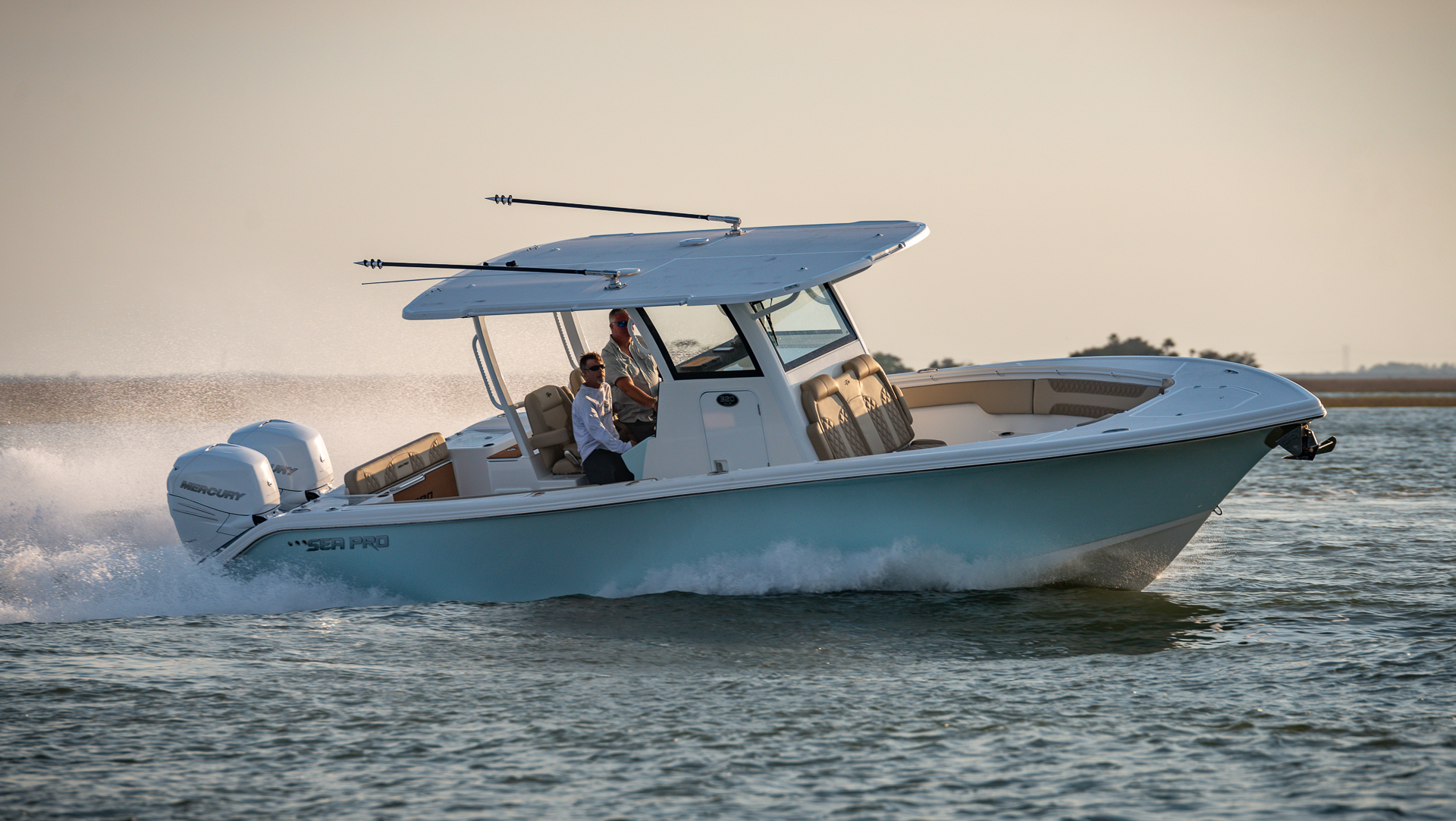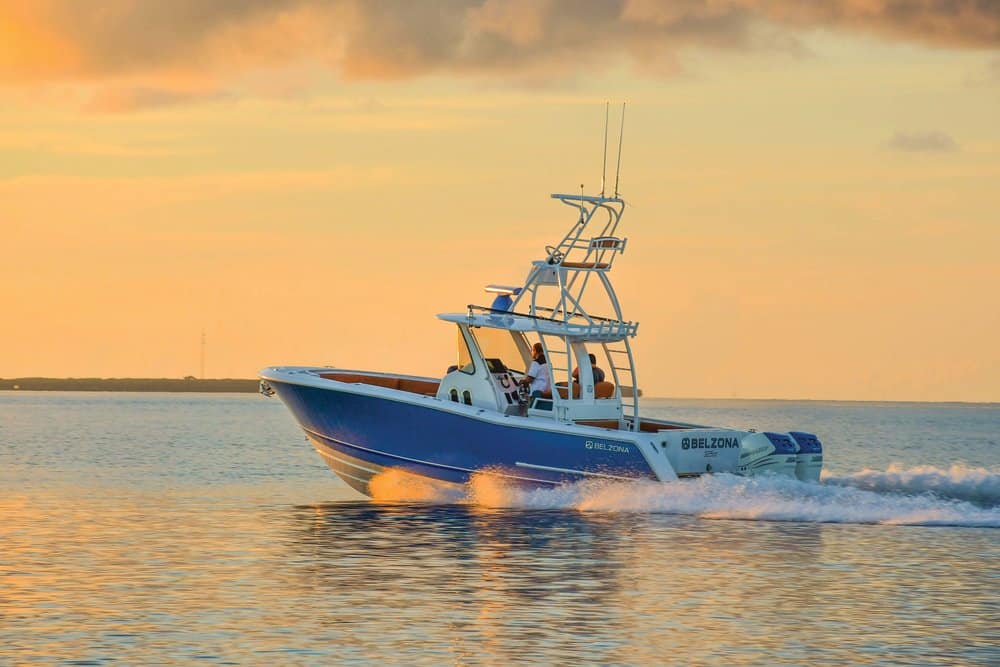A bay boat for anglers and family fun
“It’s a fun boat to run,” said Brad Herndon, Sales Manager at Gloucester’s Oyster Cove Boatworks, as we eased the blue Pathfinder 2600 TRS up the Ware River to Warehouse Landing on a chilly, end-of-winter day.
“What makes it fun?” I asked. “It’s quick and agile,” Brad replied. That’s an interesting choice of words for a hardcore fish boat designed also to serve families comfortably. Trust Pathfinder, the bay boat division of the Maverick Boat Group, to meet high standards in each of those categories, all in the same model.
But wait. Low-freeboard bay boats aren’t safe in the Chesapeake, are they? Well, odds are that no one who says so has ever run one. One of my first experiences with them, more than 20 years ago, involved navigating short, breaking 5- to 6-foot seas at the mouths of inlets in Florida. Running at slow planing speeds, the boat simply rose to crest the waves, slid down their backs, and rose again to the next ones. No spray came aboard, but if it had, it would have flowed overboard through the self-bailing cockpit. The boat? A Pathfinder 2200.
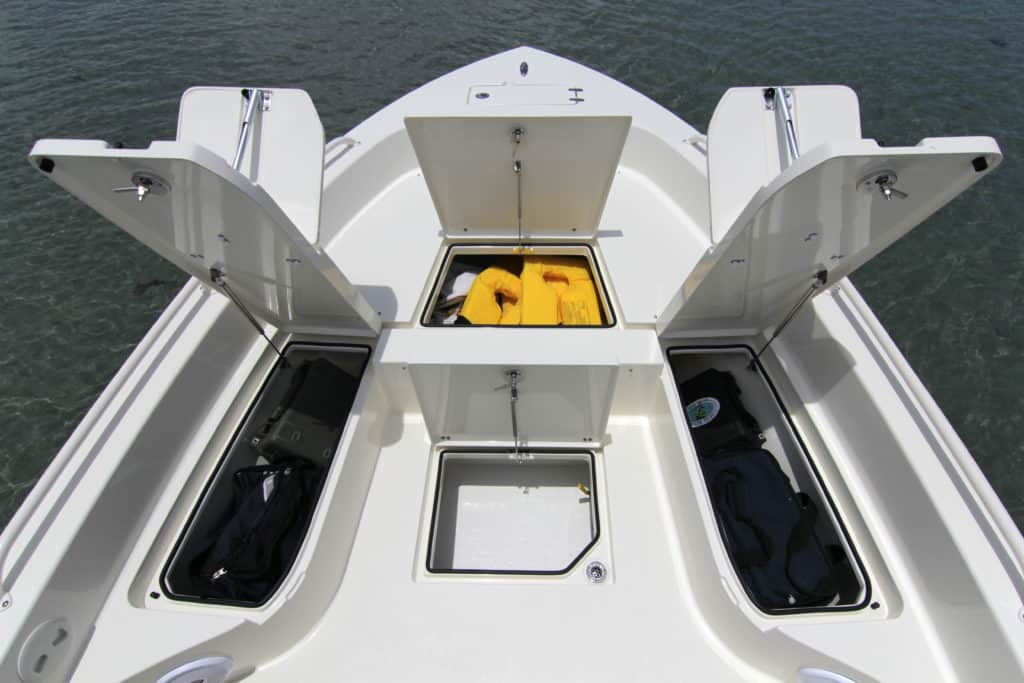
Chesapeake Bay Magazine has reviewed several capable bay boats in the past few years: Boston Whaler’s 270 Dauntless, Regulator’s 26XO and 24XO, and Robalo’s Cayman 246. This is our first Pathfinder, and we’re glad to find the brand finally beginning to take hold in the lower Chesapeake. Upper Bay anglers should take note as well.
The point of the bay boat design is to put an able hull with moderate deadrise for shallow draft under a cockpit built for anglers. It allows light tackle and fly anglers to fish all but the shallowest water, while still running out into open water safely on all but the nastiest days. That’s not a bad way to fish rockfish, speckled trout, red drum, cobia, and almost any other species between the Chesapeake Bay Bridge-Tunnel and the Susquehanna Flats.
The bay boat formula has always called for a center console, fore-and-aft casting decks, the aforementioned seaworthy hull form with self-bailing cockpit, trim tabs for taking full advantage of the hull shape, plenty of storage, ample rod racks, and livewells for carrying baitfish. More recent additions have been powerful bow-mount electric motors with remote control, T-tops, transom jackplates for shallow running, electric shallow-water anchors, and even a tower (second, elevated steering station) for sight-fishing red drum and cobia.
Bay boat anglers have found plenty of family uses for their skiffs, whether towing skis, boards, and tubes, or taking trips to favored beaches. More recently, builders have added serious family features, including low-profile side rails that offer safety without creating windage or snagging lines, snap-on sun pads for bow decks, removable cockpit tables, large consoles for changing rooms with toilets, a pair of lift-up seat backs that turn the bow deck into matching lounges port/starboard, seating for up to ten people, and a twin-stepped hull that contributes the speed with agility. Brad Herndon’s “fun boat”, the 2600 TRS (Third Row Seating), includes all of the above, designed using the experiences of Pathfinder’s design team (all serious anglers), dealers, guides, and customers. It’s the full package, a hardcore fishing boat suited to nearly every Chesapeake fishery, and a safe, comfortable family day boat as well.
As a brand, Pathfinder evolved out of the Maverick Boat Company’s original Florida “flats-and-backcountry skiff” brands, Hewes and Maverick, in the 1990s. (The company also acquired the Cobia brand in the 2000s). Pathfinder aimed specifically for anglers along the Gulf and Atlantic Coasts who fished shallow areas but needed to run bigger water part of the time. The running bottom of the 2200, at the time the brand’s largest model, was born of the longest Maverick and Hewes models, but with a roomier, deeper cockpit for fishing in rougher water. Since then, it has become a favorite of tournament anglers and fly/light tackle guides up and down the coasts. Pathfinder has expanded the size range to seven models from the 2005 to the 2700, while improving hull design, construction techniques, and specific features.
Five of the models, including the 2600 TRS, incorporate HPS (High Performance Step) hulls built light but strong with Pathfinder’s proprietary VARIS (Vacuum Assisted Resin Infusion System) integrated construction technique. VARIS helps the 2600 TRS weigh in anywhere from 500 to 1,500 lbs. lighter than comparable boats from other manufacturers, which certainly contributes to its speed and agility. (There are pros and cons to weight in a bay boat, so it pays to sea-trial several before investing in one to see what you like best for your purposes.) The twin hull steps on each side of the bottom draw in air that mixes with the water to provide a slippery cushion that reduces friction and increases speed.
Our day on Mobjack Bay didn’t offer enough seas to test the 2600 TRS to the extreme, but there were enough waves to see it could carve them open at speeds beyond what I’m used to running. With its sturdy Yamaha F300 turning 6,000 rpm, the steps drawing in a cushion of air, and the hull trimmed to let the sharp forefoot do its work, the boat turned in a two-way average of 44.9 knots, burning 26.9 gph. The boat held plane easily at 17 knots (3,300 rpm), assisted by engine trim, tabs, and jackplate height adjustments. The most efficient cruise we saw was at 30 knots (4,000 rpm, 11.8 gph). Our test boat held tight in sharp turns, thanks to painstaking design of the steps, strakes, and chines. Stability at rest while drifting was excellent, making this wide hull a great platform for any mission from jigging trips to days on race committee.
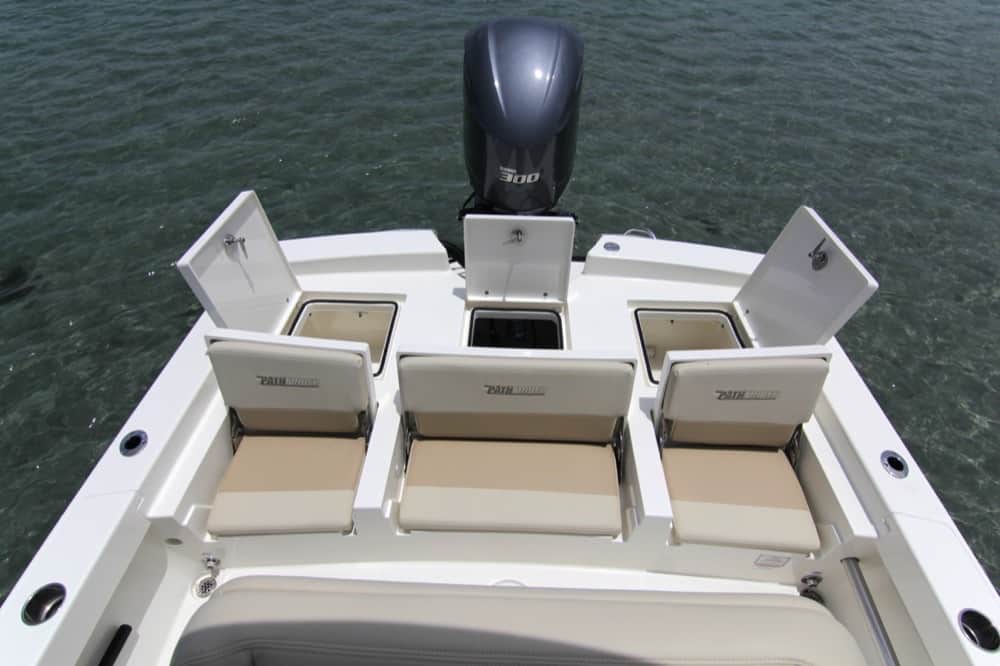
A boat like the 2600 TRS that does so many things well is going to cost a dollar or two. To be worth the investment, it had better hold together for the long haul. If there’s a catch to a do-everything boat, it’s complexity. Between livewells, jackplate, trim tabs, hatches with hinges and latches, bow-mount electric motor, batteries, stereo, VHF, chartplotter/fishfinder, and toilet, there’s a lot of plumbing, wiring, and other stuff to keep up with. The Maverick Boat Company recognizes this reality, building long-lasting, easy-to-maintain boats with good access to all operating systems.
In videos on Pathfinder’s website, you can see the 2600 TRS in action, plus learn more about its design and fishing capabilities. You’ll come away from the videos with assurance that Pathfinder builds its boats to serve their people well for years. Welcome to the Chesapeake!
Base MSRP for the Pathfinder 2600 TRS with a Yamaha F300 is $112,887, according to the BUILD section on the website. Desirable options like a hardtop, stereo, electronics, a bow mount electric motor with batteries and charger, and head with pumpout will take the MSRP toward $150,000. For more information, visit pathfinderboats.com.

